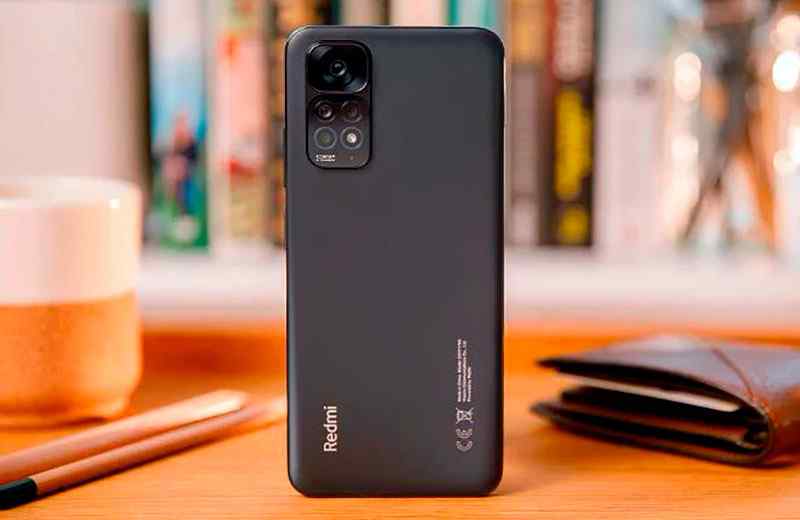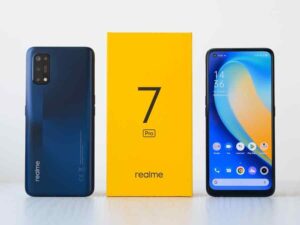Xiaomi Redmi Note 11S Review: A Versatile Smartphone
Xiaomi Redmi Note 11S is an improved version of the Note 11 smartphone, released in early 2022. Instead of the Snapdragon 680 processor, the Helio G96 is installed here, the amount of RAM is 6GB or 8GB, and the resolution of the main camera is 108 MP (instead of 50 MP).
This is a good mid-range phone with a bright AMOLED display, stereo speakers, fast charging, and quad rear cameras. On the other hand, there is no 4K video shooting, which was even on last year’s Note 10S, and Android 11 is used as the OS. But, you can close your eyes to these shortcomings, given the price.
Xiaomi Redmi Note 11S Specifications
| Display | 6.43″ AMOLED, 2400×1080 pixels, 409 PPI pixel density, 20:9 aspect ratio, 90Hz refresh rate |
| CPU/Processor | MediaTek Helio G96 (12nm): Octa-core (2×2.05GHz Cortex-A76 + 6×2.0GHz Cortex-A55) |
| GPU | Mali-G57 MC2 |
| RAM | 6/8 GB LPDDR4 |
| Internal Memory | 64/128 GB UFS 3.1, expandable via microSD |
| OS | Android 11, MIUI 13 |
| Main Camera | 108 MP, f/1.9, 26mm, wide-angle, PDAF
8 MP, f/2.2, ultra wide-angle, 118˚ 2 MP, f/2.4, macro lens, 2 MP, f/2.4, depth sensor |
| Front Camera | 16 MP, f/2.5, wide-angle |
| Video Recording | Main: 1080p at 30 fps
Front: 1080p at 30 fps |
| Communication & Connections | Wi-Fi 802.11 a/b/g/n/ac, dual-band, Wi-Fi Direct, hotspot, Bluetooth 5.0, A2DP, LE, A-GPS, GLONASS, BDS, GALILEO, NFC, Infrared, USB Type -C 2.0 USB On-The-Go |
| Networks | GSM/HSPA/LTE |
| Security | IP53, dust, and splash proof |
| Sound/Audio | Stereo speakers, 24-bit/192 kHz, 3.5 mm |
| Sensors | Fingerprint scanner (side), accelerometer, gyroscope, compass, virtual proximity sensor |
| Battery | Li-Po 5000 mAh, non-removable, fast charging 33 W |
| Colors | Grey, white, blue |
| Material | Corning Gorilla Glass 3 front, AG glass back, plastic side bezels |
| Dimensions and Weight | 159.9×73.9×8.1mm, 179g |
Xiaomi Redmi Note 11s Design
There are four smartphones in the Note 11 line, similar to each other: regular Note differs from Pro models only in slightly smaller dimensions. The display of the Xiaomi Redmi Note 11S is flat and protected by Gorilla Glass 3.
The back cover is made of AG glass, which is rounded on the sides, and the side frames are plastic. The case has protection against dust and splashes IP53 – the gadget can be safely used during rain, but no more. The SIM card slot is protected by a rubber plug.
The display diagonal is 6.43 inches, and the frames around are small, although the “chin” is noticeably more massive. The front camera is in the hole in the middle of the upper part of the screen, and above it, you can see a thin grille with a speaker.
Interestingly, the sound comes not only from the top grille of the Redmi Note 11S but also from the holes on the top edge, this makes the sound more balanced. The camera module on the back consists of two parts: the main 108 MP sensor is located at the top, and three additional cameras and an LED flash are located at the bottom. The problem is that the module protrudes a lot – it seems to be thicker than a smartphone. But the back cover is matte and pleasant to the touch, and stains and prints on it are almost invisible.
On the top side of the Note 11S, you’ll find a 3.5mm headphone jack, infrared, microphone, and speaker output. On the bottom are the main speaker, another microphone, and a USB connector. On the left is a slot for two SIM and microSD memory cards, and on the right is the power key with a fingerprint scanner and volume buttons.
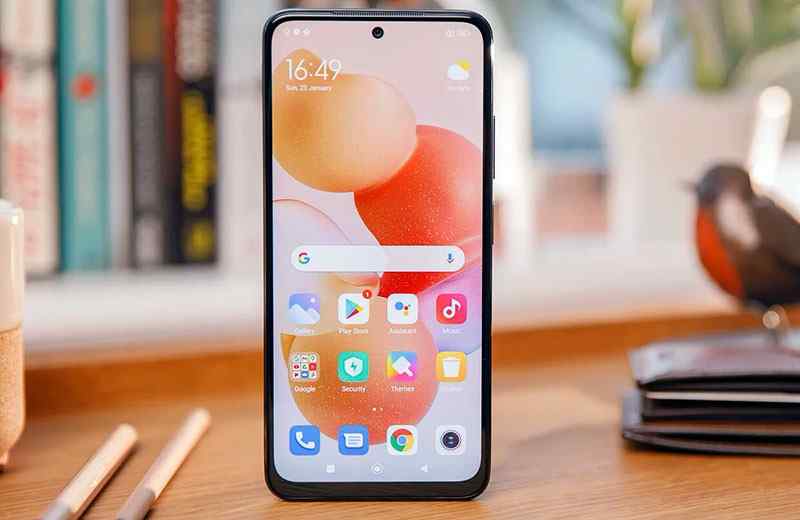
Xiaomi Redmi Note 11S Display Screen
The display of the Xiaomi Redmi Note 11S is the same as that of the Redmi Note 11 – it is a 6.43-inch 1080p AMOLED panel with a 90Hz refresh rate. Brightness reaches 465 nits when manually adjusted and can go up to 745 nits in bright daylight. The minimum brightness is 2.1 nits. Color profiles are available in the settings: default Vivid (DCI-P3), Saturated (DCI-P3 with richer colors), and Standard (sRGB). You can also manually adjust the color temperature for each preset.
The panel refresh rate of the Redmi Note 11S has two modes: Standard (60Hz) and High (90Hz). In the first case, the frequency is 60 Hz everywhere, in the second it switches to 90 Hz when interacting with the screen. High frame rates in games are possible, but the GPU is too weak here to count on 60 fps even on low settings.
Xiaomi Redmi Note 11S Camera
108MP main lens, 8MP ultra-wide-angle lens, 2MP macro lens, and 2MP depth sensor. There is also an LED flash when the front camera shoots at 16 megapixels. The main sensor by default saves photos in 12MP resolution, which look great.
You will have high detail, accurate white balance, and natural tones. The main problem with 108-megapixel cameras is not here either – a lot of noise. Photos have high contrast and a wide dynamic range.
A 108 MP mode is available, which is useful for two purposes: to capture more detailed 12 MP photos, or to zoom in and crop the center of the frame, which will give an analog of optical zoom. True, for this you will have to use a computer and an image processing editor.
The ultra-wide-angle camera of the Redmi Note 11S with a resolution of 8 megapixels also shoots well – there is little noise, high detail, and contrasting colors. The dynamic range is not the widest, but overall the camera does a good job.
The 2MP depth sensor helps with portrait shots and works well, though not perfect. Sometimes the separation of the subject and the background is inaccurate, especially in the hair area, but the bokeh effect looks natural.
The 2MP macro lens is pretty mediocre, although when shooting at a distance of 4-5 cm, photos can turn out quite good. If you like to photograph flowers or insects up close, the camera will allow you to do this.
The Note 11S can record video up to 1080p at 30fps from the main, ultra-wide, and front cameras, while the macro lens is limited to 720p/30fps. The Helio G95 processor in the Redmi Note 10S supports 4K shooting, but the Helio G96 is unable to do so. While many questions the need for 4K on a smartphone with a 1080p display, visually 4K looks better than 1080p even on a Full HD panel.
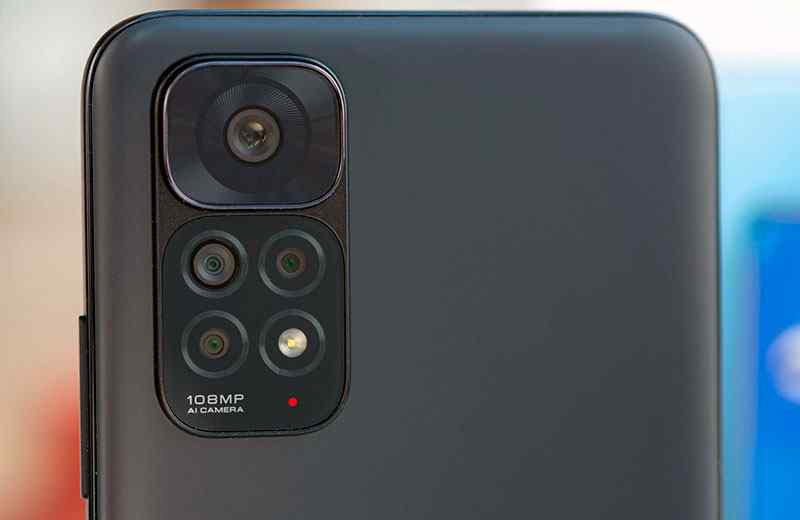
Xiaomi Redmi Note 11s Software
Xiaomi Redmi Note 11S runs on the Android 11 operating system with the MIUI 13 shell, so many Android 12 features are missing here. No updated widgets, no privacy bar, and no option to share your approximate location instead of your exact location.
However, MIUI has been heavily optimized internally, according to Xiaomi, and resources are now distributed much more efficiently. Thanks to improved defragmentation, you can count on longer internal storage life, and energy consumption has decreased by 10%.
There is an always-on display for the display, but it only works for 10 seconds. At the very least, there are plenty of interesting themes to choose from, and the sides light up when messages are received. As in MIUI 12, the notification panel is divided into Control Center and Notification Center, although you can return to the normal view in the settings. Any application can also be placed in a floating window.
The screenshot tool has also been improved – you can make an inscription of any color, erase part of the image or crop it. Several power-saving modes are available in the battery settings, and here you can also check the temperature of the battery. But there is no performance mode on the Note 11S.
Xiaomi Redmi Note 11S Performance
For the performance of Xiaomi Redmi Note 11S, the MediaTek Helio G96 processor, made using a 12nm process technology, is responsible. The chipset uses eight cores: two productive Cortex-A76 (2.05 GHz) and six energy-efficient Cortex-A55 (2.0 GHz). The dual-core accelerator Mali-G57 works with graphics, and the amount of RAM is 6 or 8 GB.
The internal storage capacity is 64 or 128 GB, although it can be increased via a microSD memory card. The results in performance tests for its price segment are normal. GeekBench 5 scores 586/1873, although the Mali-G57 GPU is rather weak. In the GFX Car Chase ES 3.1 test, Redmi Note 11S only has 12 fps. For example, last year’s Realme 8 with Mali-G76 is gaining 18 fps.
There are almost no noticeable lags when navigating the interface, but in games, you will have to lower the graphics settings to rely on a higher frequency. Note 11S is one of the weakest smartphones in the line, even inferior to the previous Note 10S model.
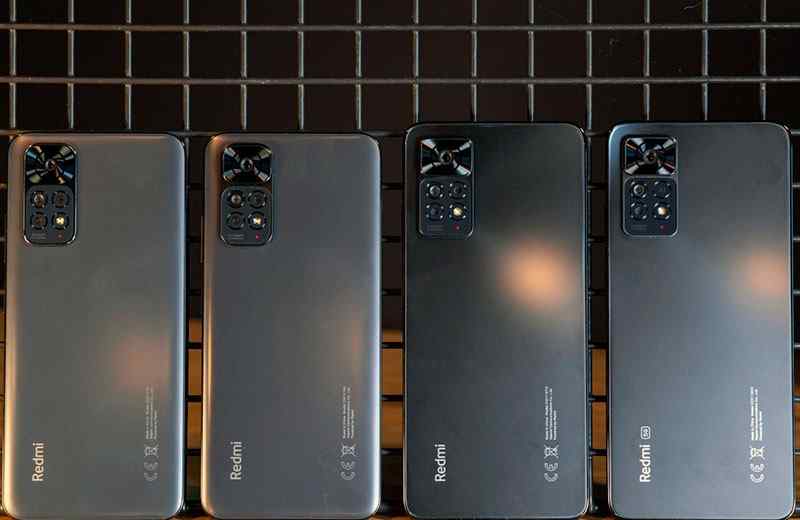
Xiaomi Redmi Note 11s Sound Quality
The Xiaomi Redmi Note 11S smartphone offers two speakers on the top and bottom side of the case, forming a stereo pair. Since the upper radiator is also conversational, it is noticeably weaker than the lower one, even despite the additional holes in the case.
It is mainly responsible for the upper frequencies. But the sound of the main speaker is more impressive: you can hear the bass and clear mids. The volume is high, you can watch the content or play without headphones.
Xiaomi Redmi Note 11S Battery
Like other smartphones in the line, the Redmi Note 11S has a 5000 mAh battery under the body. The Helio G96 processor is not too demanding on energy, so the battery life here is long: 15.5 hours of web surfing or 18 hours of video playback.
The phone supports 33W charging, and an adapter with the same power is included. In half an hour, Note 11S is charged up to 60%, and the replenishment process from 0 to 100% takes 1 hour. Unfortunately, the smartphones of the Redmi Note 11 line do not have the best value for money, as Xiaomi used to.
Xiaomi Redmi Note 11S Alternative Phones
The Note 11S is a continuation of the Xiaomi Redmi Note 10S, which still seems like a good choice. The device has 4K video shooting, and gaming performance is higher. On the other hand, the 11S has more RAM, a 90Hz screen refresh rate, and a 108MP primary camera.
There’s the Xiaomi Redmi Note 10 Pro with a 120Hz AMOLED display, a great Snapdragon 732G, and a faster Adreno 618 GPU. The Note 10 Pro has a 5MP telemacro lens for better close-up photos.
The Samsung Galaxy A52s 5G is fully water-resistant and features an AMOLED screen with a 120Hz refresh rate. The Snapdragon 778G 5G processor is much more powerful than the Helio G96, and the Galaxy A52s is capable of capturing 4K video from the main or ultra-wide camera.
Verdict
In general, Xiaomi Redmi Note 11S is a good and inexpensive smartphone with an attractive design, high autonomy, loudspeakers, and high-quality cameras. There is a 3.5 mm jack needed by many users, support for microSD, and an infrared port.
But unfortunately, the performance of the model is not the highest, because MediaTek Helio G96 is installed inside. Alas, in the budget price segment today, there are competitive smartphones that surpass the Note 11S in terms of speed and image quality.
See More: Redmi Note 11 vs Redmi Note 10 Comparison
Follow Top and Trending on Google News and receive the latest alerts and the main news about apps, technology, beauty, entertainment, and all the top 10 related posts.

